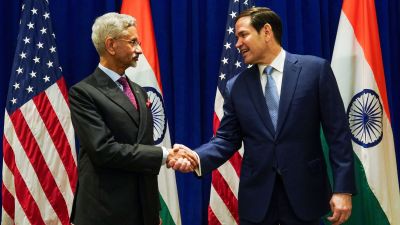Ground zero
From the indentation her head left in the mud, the girl seemed about five years old. The soldiers recalled they found her face down under a ...

From the indentation her head left in the mud, the girl seemed about five years old. The soldiers recalled they found her face down under a collapsed brick wall.
A fluffy yellow Big Bird doll lay slumped across the earth six feet away, near a pink halter top, bearing English words — ‘‘Life Changes.’’ Nearby, the soldiers found a man’s driver’s licence. Nothing else was known about the little girl extracted on Friday morning from the rubble of a house near the Suak Indrapuri mosque.
She was found here on the coast of death, the isolated western side of the island of Sumatra that was closest to the epicenter of the powerful undersea earthquake 12 days ago. Even by the standards of the carnage inflicted elsewhere by the tsunami, what happened here will evoke horror and amazement for generations to come.
In a city of more than 1,00,000 people, somewhere between 25,000 and 35,000 perished in a single day, according to reports from government officials and aid workers. The tsunami severed Meulaboh from the rest of the world, slicing into the coastal highway, a lifeline to the provincial capital, Banda Aceh. Along the road, houses were destroyed, fields turned into swamps, trees splintered and telephone and electrical lines downed.
The Indonesian soldiers who found the girl carried her to the road. Indonesian Red Cross volunteers wrapped her in black plastic sheeting, dropped her in a truck with other corpses, then drove her to a mass grave.
They took no fingerprints and did not check for any special markings. In their hand-written report, they logged the finding only of another dead child. Just before the sun dropped into the ocean, a bulldozer lifted more than 60 bodies into the pit. Without ceremony or funeral rites, the machine scooped earth on top of the pile. Without recognition that these unidentified people had been daughter or son or husband or mother to anyone, they were buried in a 10-by-20-foot grave.
Death landed with such enormity that it disrupted the traditional rhythm of burial and mourning. So many bodies are waiting to be extracted from beneath collapsed buildings that Indonesian Army rescue crews have simply taken the bodies they’ve found and buried them en masse.
For predominantly Islamic communities already reeling from loss, the absence of physical remains has intensified the grief. Many people were left wondering what happened to their kin. Many will be left wondering forever.
‘‘I know that all my family is gone, but we have to get the bodies,’’ said Johansyah Alibasyah, who rode here on a motorcycle from his home nine hours away to try to recover the remains of his uncle and his three children. ‘‘We have to know where they are buried so we can visit them.’’
On higher ground, above the coast, a semblance of normalcy has taken hold. Markets are open again, offering fresh vegetables; restaurants sell fried rice wrapped in banana leaves. But much of the city remains a wasteland.
Entire neighbourhoods have been reduced to rubble, with everyday items — sewing machines, fans, concrete blocks, tires — strewn about in a mud-covered mosaic.
‘‘It was Armageddon,’’ said Maisura Zainol, 30, who survived the waves on the second floor of her concrete house, even as dozens of her neighbours were washed to their deaths.‘‘The water was like a mountain. We thought we were going to die.’’
On Korpri Street, a road near the beach lined with handsome, two-storey houses, Diana mourned the loss of her sister. But Diana at least has a semblance of peace, denied to so many others here — her family found her sister’s body. On the evening of the first day, her brother-in-law carried his wife through waist-deep muck for an hour, then loaded her on to his motorbike and drove her to his house in a village above the damage. They washed her body and wrapped her in white cloth. Then they said their prayers and buried her.
In the first days after the December 26 cataclysm, life here was dominated by the stench of rotting flesh, fear of another wave and a desperate sense of siege, say survivors.
The first international aid reached the city on January 2. A Singapore armed forces medical team flew in by helicopter with 11 doctors and 21 support staff. One of the city’s two hospitals had been completely destroyed. The other was standing, but nearly, all of the staff members were dead or busy searching for missing relatives. Tens of thousands of survivors are taking refuge in more than two dozen camps around the city. —LAT-WP
Photos


- 01
- 02
- 03
- 04
- 05





























